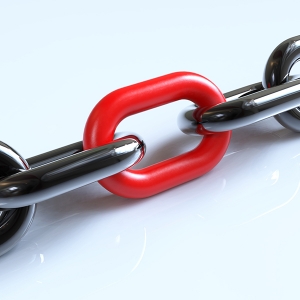Critical Chain - less is more?
 26.08.2019 -
Have you ever heard the term "critical chain"? In project management, this term appears again and again when it comes to the critical path in the project schedule and lean management. But what exactly does critical chain mean for a project manager in everyday life? One could roughly describe a critical chain as "less is more". But how can it be that in a project environment where deadlines and budgets are exceeded, less management is better? Shouldn't the PM use all the levers to achieve the goals through more and better management performance? Generally speaking, yes. But that's exactly what the critical chain is all about: concentrating on the essentials, on the critical, and saving where possible.
26.08.2019 -
Have you ever heard the term "critical chain"? In project management, this term appears again and again when it comes to the critical path in the project schedule and lean management. But what exactly does critical chain mean for a project manager in everyday life? One could roughly describe a critical chain as "less is more". But how can it be that in a project environment where deadlines and budgets are exceeded, less management is better? Shouldn't the PM use all the levers to achieve the goals through more and better management performance? Generally speaking, yes. But that's exactly what the critical chain is all about: concentrating on the essentials, on the critical, and saving where possible.Where does the critical chain come from?
The approach goes back to the 1950s. Back then, there was research on the topic of the critical path. One of the main findings of that time was that when calculating the critical path not only the factual circumstances but also the dependence on different resources had to be taken into account. Put simply, it means, for example, that theoretically a project can be completed in a month if two people work on it in parallel. If, however, only one of these people has a certain skill or a certain tool, this must be taken into account when calculating the project duration. Sounds logical, but is often a source of error in large projects. Everything that has an influence on the critical path must therefore be included in the planning. It was not until the 1950s that such so-called resource bottlenecks in project planning were also taken into account in the programmatic area, which was an enormous step forward. This is how the idea of the critical chain was born. Chain is the perfect symbol for processes that line up like links in a chain and therefore cannot run in parallel. Today, Critical Chain Management is understood to mean planning that is bottleneck oriented and can also encompass several projects.
When is less more?
In a company, many projects run simultaneously. The resources must be distributed as efficiently as possible among the projects. Bottlenecks often arise because different projects want to use the same resources. This includes people as well as tools and materials. But since nobody is supposed to keep their fingers crossed, it is better to have bottlenecks than empty runs. First there is some stress and then the compulsion to multitask. Hardly anyone can concentrate fully on a task, because something new always begins before the old one is completed. Employees have several tasks in several projects. That actually sounds like a normal working day. However, multitasking has considerable disadvantages. It is usually one of the reasons why projects take longer than planned. Various studies on this topic have shown that 30 to even 70% of a company's performance capacity is lost simply because all employees are constantly multitasking. This is a starting point for project. How do I get my employees to complete a project before they get involved in new tasks? If you have fewer tasks, you can complete them faster. This may not apply to all areas of project management, but in principle it applies to all industries. In this case, less is more.
The Critical Chain Model
If you want to introduce or implement the concept of the critical chain in your company or in your projects, you should first create an overview of the current projects. Priorities must then be set. After all, you will be looking at the more important half of the projects. Let's say you have 12 projects to which you have assigned priorities from 1 to 12. Now simply shut down projects 7 through 12 (temporarily) and focus on projects 1 through 6, ensuring that bottlenecks caused by collisions between different projects are halved. Your employees now really have time to complete their tasks quickly and efficiently and complete the first (most important) six projects. Once one of the priority projects has been completed, another can be moved forward and reactivated. But since you as a manager don't want to spend hours every day observing projects and prioritizing them, a mechanism has to be created. In this way, the efficiency of the company can be increased by up to 30%. Of course, it must be noted that not all types of projects can be frozen just like that. A big advantage is that employees have less pressure because they are relieved of half of their deadlines. This pressure only returns when another printing factor has disappeared. Caution is advised when naming completion dates, especially for new projects. Don't promise your customers anything you can't keep afterwards, otherwise you'll have to move quickly away from your new approach. According to the critical chain approach, a new project starts with a little delay - unless it has suddenly become the most important project.
« Back to overview
